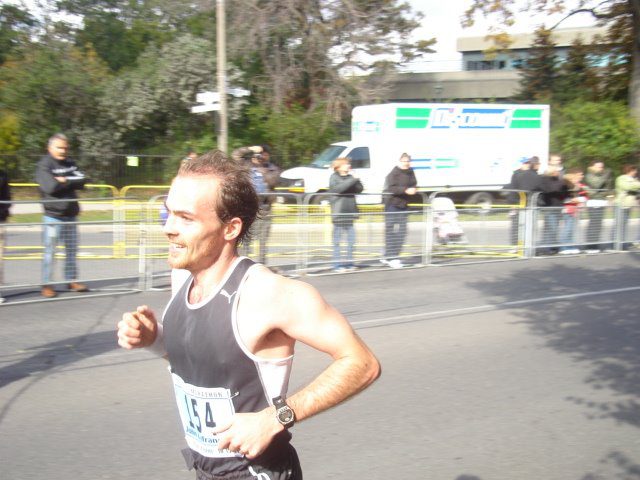Working on “speed” is not what you think


“I need to work on my speed.” This is something I hear all the time from new runners. It is a common misconception to think that because you run mostly marathons and half-marathons, or that your 5K time is not as fast as you’d like it to be, that the solution lies with “speed.” The fact is, this is probably not the case. Yes, you probably could work on your speed, but the way to do this is not what you think.
First, let’s define terms. What is “speed”? Speed is a very generic term that just means velocity. It is a relative measure of how fast are you going. There are many factors which help determine your velocity. The most important factor for all distance races, (it accounts for upwards of 90 per cent of your “speed”) is your aerobic engine. The better your body is at using oxygen, the faster you will go. So to work on this particular kind of speed, aerobic work is what is needed. Aerobic work varies from easy runs (which should take up about 80 per cent or more of your training time) to tempo runs (10-15 per cent) to aerobic intervals (5-10 per cent). So, as you can see, the area with the most potential to improve your “speed” is the easy run: run more, and you’ll run faster.
Another factor is certainly your anaerobic metabolism. This is what most people think they mean by “speed” and contributes about 90 seconds worth of energy in any distance race, whether it is in an 800m or a half-marathon. So there’s a pretty limited amount we can do here. We can’t train it to account for more than that. We can train to go faster during those 90 seconds, but if your race is over 20 minutes, that’s not going to help much. Those 200s and 400s you are running aren’t really helping your speed. Most people do too many of them, and while they can be useful, after a steady diet of about three to six weeks of them, they aren’t actually helping anymore. Better to spend the time and energy working the aerobic system.
We do a little test in our group: 2K as fast as you can, then 20 minutes later a 400m as fast as you can. 2K is a mostly aerobic race (about 80 per cent) and from that time we can estimate what your 400m should be (I use the McMillan calculator, which works just as well, if not better than some of the traditional tables because it is based on actual race performances, not secondary information like VO2max values). If your 400m as executed is what it is expected to be, then you have a fairly even aerobic/anaerobic profile. In this case, working on your aerobic system primarily continues to be the best idea, as it does contribute the most to your likely race distances. If (and this is usually the case) your 400m is faster than predicted, it probably means your aerobic metabolism is under-developed relative to your anaerobic capacity. You don’t need to work on that kind of speed as you are already doing OK. The aerobic system is where you need to work. If your 400m is slower than predicted (I’ve rarely seen this happen), then you can probably stand to work on your speed specifically for a period of time. Even then, there’s a way to do this without blasting the anaerobic lactic intervals.
When most runners speak of needing to improve “speed,” what they really need to work on is turnover. The ability to move the legs. When we get older, our range of motion decreases, our muscles fire less quickly, and while we can maintain a nice steady pace for a while, it might take some time to get there, and we’re not very good at running outside of that safe rhythm. This is indeed the “speed” that you can work on. As I mentioned above, you can work on it by building your aerobic engine, thus increasing the speed of your steady run. The best way to work on speed is by training your brain to more quickly send the “go” messages to your leg muscles. This isn’t, like many people think, achieved by running intervals at 3K or 5K pace, nor the aforementioned 200s at 1500m pace. What you need to do are short, fast sprints with lots of rest.
The good news is that this is really easy to do. When you go out for your usual easy run, wait until you are nice and warmed up, say about 10-15 minutes in, and then do a set (start with four, work up gradually to 12) of eight second sprints. Yes, eight seconds. That’s probably about 25-30 strides. Keep jogging at least a minute for a full recovery between each one. Do this again at the end of your run. I suggest the beginning of the run because you will be fresh, and you can work with good form. It’s also good to do them at the end of the run, as the speed will encourage the easy running in between to be in better form. A couple of these a week doesn’t add much load to your work, but you’ll find yourself with a pep in your step, and find that “speed” you were seeking.


